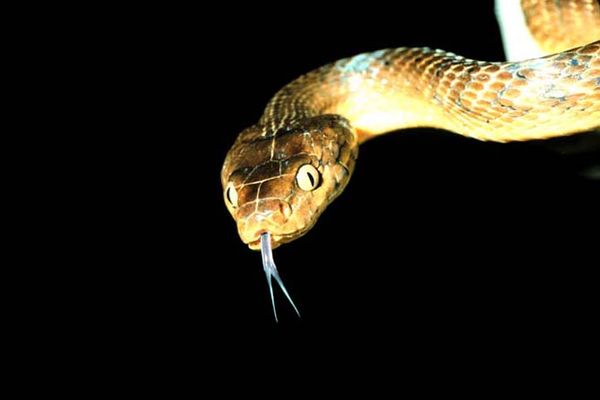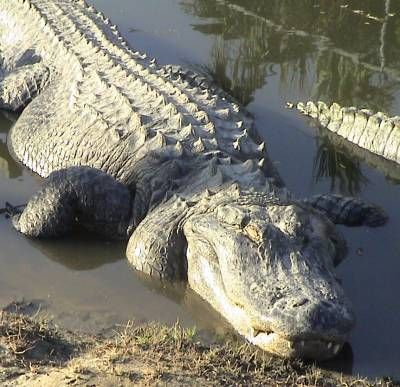Garter snakes, sometimes called garden snakes, are common in North America and Central America. At 2 to 3 feet (60.96 to 91.44 centimeters) in length, they are small, thin and named for the yellow, white or red stripes that run lengthwise down their backs and are reminiscent of garters [source: Venomous Snakes]. On either side of the stripes are rows of spots in a checkerboard pattern. Garter snakes' bodies are generally black or brown, though they are sometimes green or reddish colored, and their bellies are pale green or yellow [source: University of Massachusetts].
Garter snakes are nicknamed garden snakes because they are commonly found in backyards [source: Michaels]. They can also be found in forests, wetlands, grasslands, or basking on rocks near a pond or stream, and you might even find several garden snakes hibernating together [source: Venomous Snakes]. They also like to hide under things like rocks and piles of leaves or logs.
Advertisement
Different species of garter snakes are found in different areas:
- Blue garter snakes are found in Florida.
- Checkered garter snakes are found in Texas and are usually active at night.
- Northwestern garter snakes and another 10 or more kinds of red garter snakes are all native to California [source: Michaels].
Most garter snakes are only active during the daytime unless the weather is very hot, in which case you might see them at night.
If you try to handle a garden snake, it will probably release a foul-smelling fluid from its tail and may strike at you. Although the toxins in garden snake saliva can be deadly to the snails, salamanders and other animals they eat [source: Venomous Snakes], they're not dangerous to humans. Nevertheless, a garden snake bite may still cause redness, swelling and discomfort [source: Michaels].
Advertisement

